Drosophila octamer elements and Pdm-1 dictate the coordinated transcription of core histone genes
- PMID: 20097756
- PMCID: PMC2838325
- DOI: 10.1074/jbc.M109.075358
Drosophila octamer elements and Pdm-1 dictate the coordinated transcription of core histone genes
Abstract
We reveal a set of divergent octamer elements in Drosophila melanogaster (dm) core histone gene promoters. These elements recruit transcription factor POU-domain protein in D. melanogaster 1 (Pdm-1), which along with co-activator dmOct-1 coactivator in S-phase (dmOCA-S), activates transcription from at least the Drosophila histone 2B (dmH2B) and 4 (dmH4) promoters in a fashion similar to the transcription of mammalian histone 2B (H2B) gene activated by octamer binding transcription factor 1 (Oct-1) and Oct-1 coactivator in S-phase (OCA-S). The expression of core histone genes in both kingdoms is coordinated; however, although the expression of mammalian histone genes involves subtype-specific transcription factors and/or co-activator(s), the expression of Drosophila core histone genes is regulated by a common module (Pdm-1/dmOCA-S) in a directly coordinated manner. Finally, dmOCA-S is recruited to the Drosophila histone locus bodies in the S-phase, marking S-phase-specific transcription activation of core histone genes.
Figures

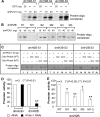
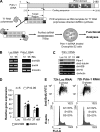
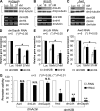
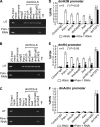
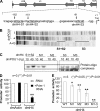
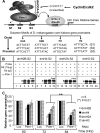
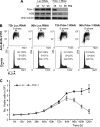
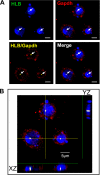
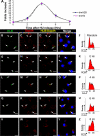
Similar articles
-
Structure-Function Analysis of the Drosophila melanogaster Caudal Transcription Factor Provides Insights into Core Promoter-preferential Activation.J Biol Chem. 2015 Jul 10;290(28):17293-305. doi: 10.1074/jbc.M114.632109. Epub 2015 May 26. J Biol Chem. 2015. PMID: 26018075 Free PMC article.
-
S phase activation of the histone H2B promoter by OCA-S, a coactivator complex that contains GAPDH as a key component.Cell. 2003 Jul 25;114(2):255-66. doi: 10.1016/s0092-8674(03)00552-x. Cell. 2003. PMID: 12887926
-
A POU homeo domain protein related to dPOU-19/pdm-1 binds to the regulatory DNA necessary for vital expression of the Drosophila choline acetyltransferase gene.J Neurosci. 1995 May;15(5 Pt 1):3509-18. doi: 10.1523/JNEUROSCI.15-05-03509.1995. J Neurosci. 1995. PMID: 7751926 Free PMC article.
-
Brn3/POU-IV-type POU homeobox genes-Paradigmatic regulators of neuronal identity across phylogeny.Wiley Interdiscip Rev Dev Biol. 2020 Jul;9(4):e374. doi: 10.1002/wdev.374. Epub 2020 Feb 3. Wiley Interdiscip Rev Dev Biol. 2020. PMID: 32012462 Review.
-
POU domain factors in neural development.Adv Exp Med Biol. 1998;449:39-53. doi: 10.1007/978-1-4615-4871-3_4. Adv Exp Med Biol. 1998. PMID: 10026784 Review.
Cited by
-
Expression profile and promoter analysis of HEPIS.Exp Ther Med. 2018 Jan;15(1):569-575. doi: 10.3892/etm.2017.5374. Epub 2017 Oct 25. Exp Ther Med. 2018. PMID: 29399063 Free PMC article.
-
OCT1 is a determinant of synbindin-related ERK signalling with independent prognostic significance in gastric cancer.Gut. 2015 Jan;64(1):37-48. doi: 10.1136/gutjnl-2013-306584. Epub 2014 Apr 9. Gut. 2015. PMID: 24717932 Free PMC article.
-
POU2F1 over-expression correlates with poor prognoses and promotes cell growth and epithelial-to-mesenchymal transition in hepatocellular carcinoma.Oncotarget. 2017 Jul 4;8(27):44082-44095. doi: 10.18632/oncotarget.17296. Oncotarget. 2017. PMID: 28489585 Free PMC article.
-
Coordinating cell cycle-regulated histone gene expression through assembly and function of the Histone Locus Body.RNA Biol. 2017 Jun 3;14(6):726-738. doi: 10.1080/15476286.2016.1265198. Epub 2017 Jan 6. RNA Biol. 2017. PMID: 28059623 Free PMC article. Review.
-
Cell cycle-regulated transcriptional pausing of Drosophila replication-dependent histone genes.bioRxiv [Preprint]. 2024 Dec 17:2024.12.16.628706. doi: 10.1101/2024.12.16.628706. bioRxiv. 2024. Update in: Mol Biol Cell. 2025 Jul 1;36(7):ar88. doi: 10.1091/mbc.E25-05-0212. PMID: 39763942 Free PMC article. Updated. Preprint.
References
-
- Roeder R. G. (2003) Nat. Med. 9, 1239–1244 - PubMed
-
- Hentschel C. C., Birnstiel M. L. (1981) Cell 25, 301–313 - PubMed
-
- Wang Z. F., Krasikov T., Frey M. R., Wang J., Matera A. G., Marzluff W. F. (1996) Genome Res. 6, 688–701 - PubMed
-
- Marzluff W. F., Duronio R. J. (2002) Curr. Opin. Cell Biol. 14, 692–699 - PubMed
-
- Marzluff W. F., Gongidi P., Woods K. R., Jin J., Maltais L. J. (2002) Genomics 80, 487–498 - PubMed
Publication types
MeSH terms
Substances
LinkOut - more resources
Full Text Sources
Molecular Biology Databases

